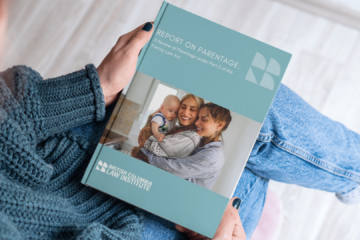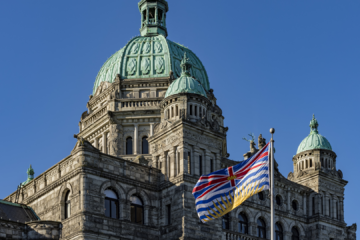Spotlight on renovating the public hearing: Should BC legislation be amended to enable other forms of public engagement on local land-use bylaws?
February 8, 2024
BY Kevin Zakreski
BCLI is running a public consultation (closing date: 15 March 2024) for its Renovate the Public Hearing Project. The consultation is asking for your views on options for reforming public engagement on local-land-use bylaws. For more information about how to participate in the public consultation, please visit the Renovate the Public Hearing Project webpage. This post throws a spotlight on one of the issues discussed in the consultation paper.
Brief statement of the issue
BC’s legislation on land use relies on the public hearing as its main instrument of public engagement. Public hearings have been criticized as failing to foster a deliberative and effective process for public engagement. Critics have suggested a host of other approaches for earlier and more thoughtful engagement. Some BC local governments have embraced other forms of public engagement (some of which are authorized by the Community Charter). Is the time right to amend the Local Government Act’s and the Vancouver Charter’s provisions on land-use bylaws to expressly enable a broader range of public engagement on land-use bylaws? If so, then precisely how should BC’s legislation be amended?
Options for reform
Readers will notice that options for many of the issues in the consultation paper are introduced by describing them as a spectrum or a range. That’s probably an apt description of the options for this issue—up to a point. But it’s better to say that this issue generates potentially a large number of options, some of which differ in degrees, but others of which introduce quite different approaches to resolving the issue and have little in common with the other options.
As a starting place, the first option is simply to retain the status quo. Some readers might conclude that the current legislation in the Local Government Act and Vancouver Charter provides the best legal framework for public engagement on land-use bylaws.
Supporters of the current law could point to some perceived strengths:
• it gives the public a platform to make representations directly to local-government decision makers;
• it has a well-defined procedure and provides for extensive disclosure of information;
• it has an extensive body of case law, which lends certainty to the legal framework.
But from another standpoint these strengths can appear as weaknesses. Each of these points feeds into criticisms of the current law:
• it relies too much on the public hearing as the only form of public engagement, which elevates a forum that doesn’t foster consensus, deliberation, and informed decision making;
• it is heavily rule-bound and formal, leading to frustration for both local governments and the public;
• it tends to empower only select segments of the public.
Another option, which would begin to respond to some of the criticisms of public hearings, would be to amend BC’s legislation on land use to have it expressly enable other forms of public engagement. There are two approaches that could be taken to implement this option.
One approach would be to add a new section that provides a general authorization to local governments to use other forms of public engagement. Such an approach would highlight the desirability of using other forms of public engagement. It would also give local governments a great deal of flexibility in employing these other forms of public engagement.
But this approach would also have some significant downsides. In practice, it might not amount to much of a reform to the law. Local governments are already free to use other forms of public engagement. So it’s not clear what a legislative authorization would really add to the legal framework.
A second approach would be to amend BC’s legislation and require that local governments use specific forms of public engagement on land-use bylaws. This approach would follow in the footsteps of one other province. Ontario’s legislation specifically calls for a local government to hold an open house in certain circumstances.
There are advantages to this option. If a specific form of engagement—such as an open house—is seen to be particularly helpful for the development of a land-use bylaw, it could be expressly identified in the legislation. This approach would create a high level of certainty for local governments about the nature and extent of their obligations for public engagement.
Having additional forms of public engagement in the legislation might also improve the public hearing. It would make the hearing less of an all-or-nothing event. The public would have another opportunity at another forum to make its views known. This could expand the range of comment and lessen the pressure often felt at public hearings.
But there are also drawbacks to this option. It would add more time to local governments’ consideration of land-use bylaws. This could lead to direct costs for local governments. It could also inhibit real-estate development.
This approach could also perpetuate features of BC’s legal framework that have attracted recent criticism. It would add a new set of imperative rules to that framework. And it would also ensure that public hearings continue to have a major place in that framework.
Another option would involve taking a significantly different approach to the legal framework. Instead of rule-based legislation that relies mainly on the public hearing, a reformed legal framework could draw instead on principles of public engagement, which were discussed elsewhere in the consultation paper. A principles-based approach to public engagement with flexibility around the forms of engagement also enables opportunities for co-designing the forms of engagement together with First Nations.
There are different ways to design this option. One approach would be simply to require that local governments undertake public engagement that is consistent with the principles. This would be the simplest way to amend the legislation. It would also leave the most flexibility in the hands of local governments to carry out public engagement.
But this approach could also be criticized. Critics could say that leaving public engagement to local governments with only the guidance provided by a list of principles is too vague and uncertain. There is also a risk that this uncertainty could spark disputes that would lead to litigation. It also risks leaving the decision of whether to consult and cooperate with First Nations largely in the hands of individual local governments with little guidance.
Another approach would be to require local governments to have a public-engagement policy. Under this approach, local governments would have to spell out in some detail how they plan to carry out public engagement on land-use bylaws. This approach lends itself to a framework that explicitly includes expectations and obligations around co-development of a public-engagement policy with First Nations governments.
Other Canadian provinces have adopted this approach in their legislation. For example, Nova Scotia simply has a legislative provision requiring a policy.
Alberta and Québec provide more detail in their legislation and regulations.
Alberta has legislation requiring the establishment of a “public participation policy.” The policy is subject to guidelines spelled out in a regulation.
Québec takes an approach that integrates the local government’s policy with legislative principles of public engagement.
These approaches have several advantages. They strike a balance between flexibility for local governments and certainty in the forms of public engagement that may be used. This would allow for a greater range of forms of public engagement to be considered, all within a principled legal framework. Such an approach may address significant concerns with the current law: its failure to provide a deliberative forum and its formal and rule-bound nature.
But there may be disadvantages to this approach. Critics could say that it might represent a step backward for the public, who could seem to lose clear rights to information and to make representations directly to the local government.
Summary of options
• BC legislation on local-land-use bylaws should be amended to require local governments to have a principles-based public-engagement policy.
• BC legislation on local-land-use bylaws should be amended to require local governments to develop a principles-based public-engagement policy in consultation and cooperation with First Nations rights and title holders.
• BC legislation on local-land-use bylaws should be amended to require local governments to have a public-engagement policy, the content of which to be determined by the local government.
• BC legislation on local-land-use bylaws should be amended to require local governments to use the following forms of public engagement in addition to the public hearing: . . . [open option inviting readers to fill in their own suggestions].
• BC legislation on local-land-use bylaws should be amended to provide local governments with a general authorization to use forms of public engagement other than public hearings.
• BC legislation on local-land-use bylaws should not be amended to deal with forms of public engagement other than the public hearing.
To respond to this issue or to read more about issues like this one, please visit the Renovate the Public Hearing Project webpage.











































